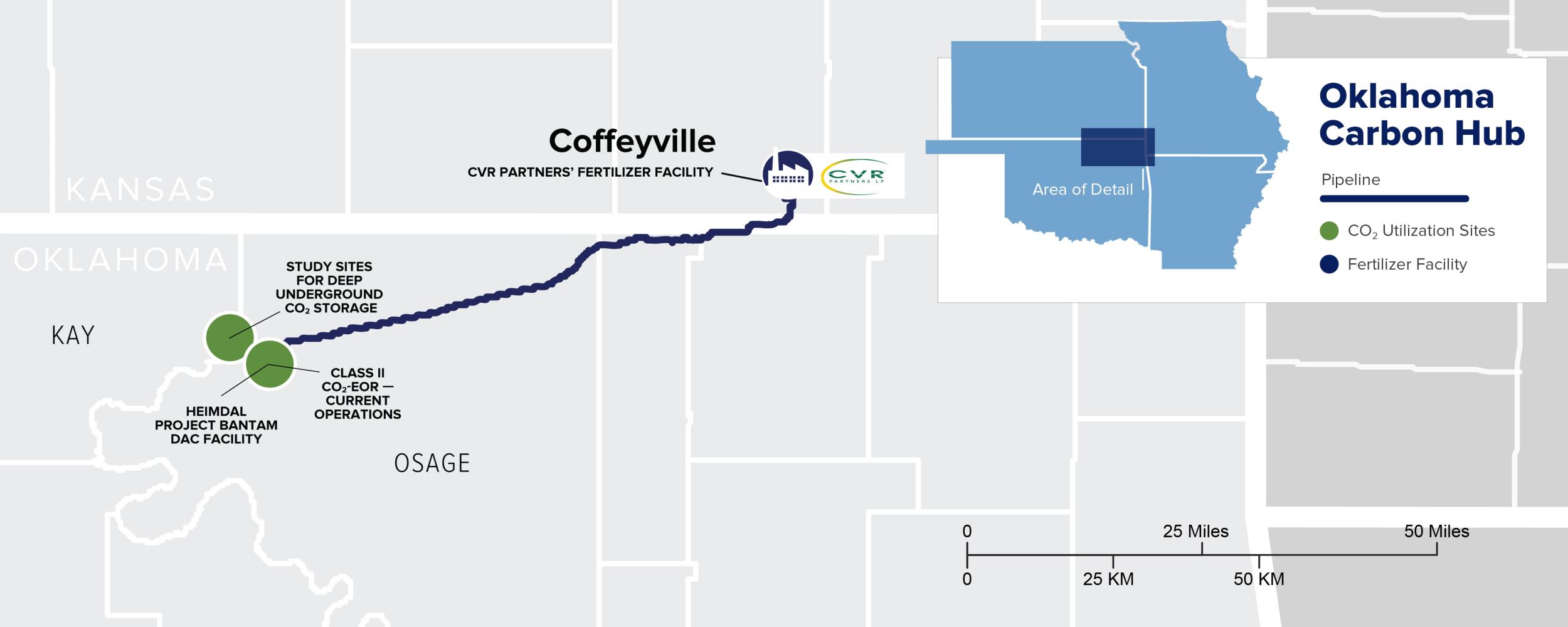Osage and Kay Counties, Oklahoma
Image

CapturePoint’s Oklahoma Carbon Hub is one of the nation’s leading CO2-EOR production sites, hosting a unique array of Carbon Capture, Utilization and Sequestration (CCUS) services and placing the State of Oklahoma at the leading edge of responsible carbon solutions.
- Industrial CO2 Capture: Up to 750,000 metric tons of carbon dioxide are captured annually from the production of ammonia fertilizer at CVR Partners’ Coffeyville Resources Nitrogen Fertilizer (CRNF) plant in Coffeyville, Kansas.
- Project Bantam Direct Air Capture (DAC) Facility: Heimdal constructed their Project Bantam DAC facility on-site at the Oklahoma Carbon Hub, which could capture more than 5,000 metric tons of CO2 annually from the atmosphere when operating at full capacity.
- CO2 Captured from the Manufacture of Sustainable Aviation Fuels (SAF): Azure, which is developing an SAF bio-production plant in Cherryvale, Kansas, has announced CapturePoint will transport CO2 emissions for sequestration in the Oklahoma Carbon Hub. (Future)
- Transportation by CO2 Pipeline: CapturePoint operates a 68-mile dedicated CO2 pipeline connecting Coffeyville, Kansas to the Oklahoma Carbon Hub. A future extension is planned from Coffeyville 20 miles north to the planned Azure SAF bio-production plant in Cherryvale, Kansas.
- Extensive CO2-EOR Operations: CapturePoint conducts Carbon Dioxide Enhanced Oil Recovery (CO2-EOR) production in 23,500 acres of the historic North Burbank Unit in Osage County — where the company also owns ~6,900 acres of the surface lands — with over 80 Class II CO2 injection wells (as well as more than 45 Class II water injection wells) currently active.
- CO2 Storage: Currently, up to 750,000 metric tons of CO2 are utilized annually in CO2-EOR operations.